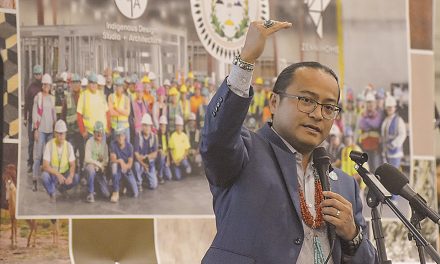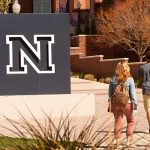
50 Years Ago | Reagan shot at filming of ‘Death Valley Days’
This is an anniversary of sorts. Ten years ago, in April of 1962, the producers of “Death Valley Days” and some 50 crew members and actors spent several days north of Gallup filming an episode of the program that was aired in 1963.
For us old folks, “Death Valley Days” was a former radio show that became a moderate hit on television telling stories centering on events and life in the old West. It had no real stars except for a host who each week would set up the background of the story that was being told that week.
That host in 1962 was Ronald Reagan, who had become a major movie star in the 1940s. By 1962, however, his movie fame was waning so he had time not only to do the show each week but star in five or six episodes a year.
One of these episodes was to be shot in part north of Gallup. One reason the producers decided to film in this area was because of story required more than 30 extras on horseback – the Apaches in a fight with an army troop.
The producers wanted Indians instead of Mexicans decked out as Indians so the decision was to use Navajos to portray the Apache warriors.
I first heard of what happened during the filming here from Martin Link. He was director of the Navajo Tribal Museum at the time and he had been hired by the producers to help find Navajos to work as extras. He would also portray a member of the calvary.
This was also one of the episodes that Reagan was in and he portrayed the captain leading the army troop.
The crew was planning to take two days filming the battle between the two groups. Everything went smoothly the first day but on the second day Reagan was shot in the leg requiring a short hospital stay.
Link said an investigation revealed that one of the extras had brought his own rifle to the shoot that day because with the one he was given the day before, he was unable to hit anything with it.
New Indian bank
The BIA reported this week the formation the American Indian National Bank. It will be located in Bartlesville, Oklahoma. Its mission is to make money available to Indians who need seed money to start their business or expand an existing one.
The federal government stepped in and basically put the bank together after a study showed such a facility was greatly needed. The decision was made to put it in Oklahoma because it would be more accessible to other tribes than if it was located on the Navajo Reservation.
There was a fear that putting it on the Navajo Reservation would result in the Navajo Tribe using it as a source to fund their own economic development projects leaving very little for other tribes.
Besides, the Navajo Tribe at that time was looking at creating its own bank to do the same thing for tribal members.
Find BIA Navajo Area director
Navajo Vice Chairman Wilson Skeet was given a task this week by the Navajo Tribal Council and he said he would need the help and of all members of the tribe if he wants to accomplish it.
“On the surface, it would look to be a simple task but it actually is one of the most difficult tasks I have ever had to accomplish,” he said.
The task: to find BIA Navajo Area Director Anthony Lincoln who apparently has been missing for the past several months, Skeet said.
It’s obvious that Lincoln is missing since he has failed to meet with the Council despite several requests for him to do so.
Skeet said Lincoln has even failed to supply a reason for his refusal to accept the Council’s request for him to come to a Council session and answer questions from the Navajo people regarding how the BIA operates.
Instead of appearing before the Council Lincoln has submitted quarterly written reports detailing what the Navajo Area BIA is doing. This should be more than enough to answer any questions the Council may have, he said.
“The written reports are not enough,” said Skeet. “We want a face to face with him.”
The main reason Council wants to meet with Lincoln is to ask him what his office is doing to further the Navajo position in the century old land dispute with the Hopis.
Lincoln would never say on the record why he has decided not to honor the Council’s request but it was obvious that he doesn’t want to argue with Council about the land dispute since the BIA position has been to stay out of it as much as possible.
This would even be harder given the Navajo belief that the Hopi BIA agency is actively helping the Hopis.








 Highway 264,
Highway 264, I-40, WB @ Winslow
I-40, WB @ Winslow